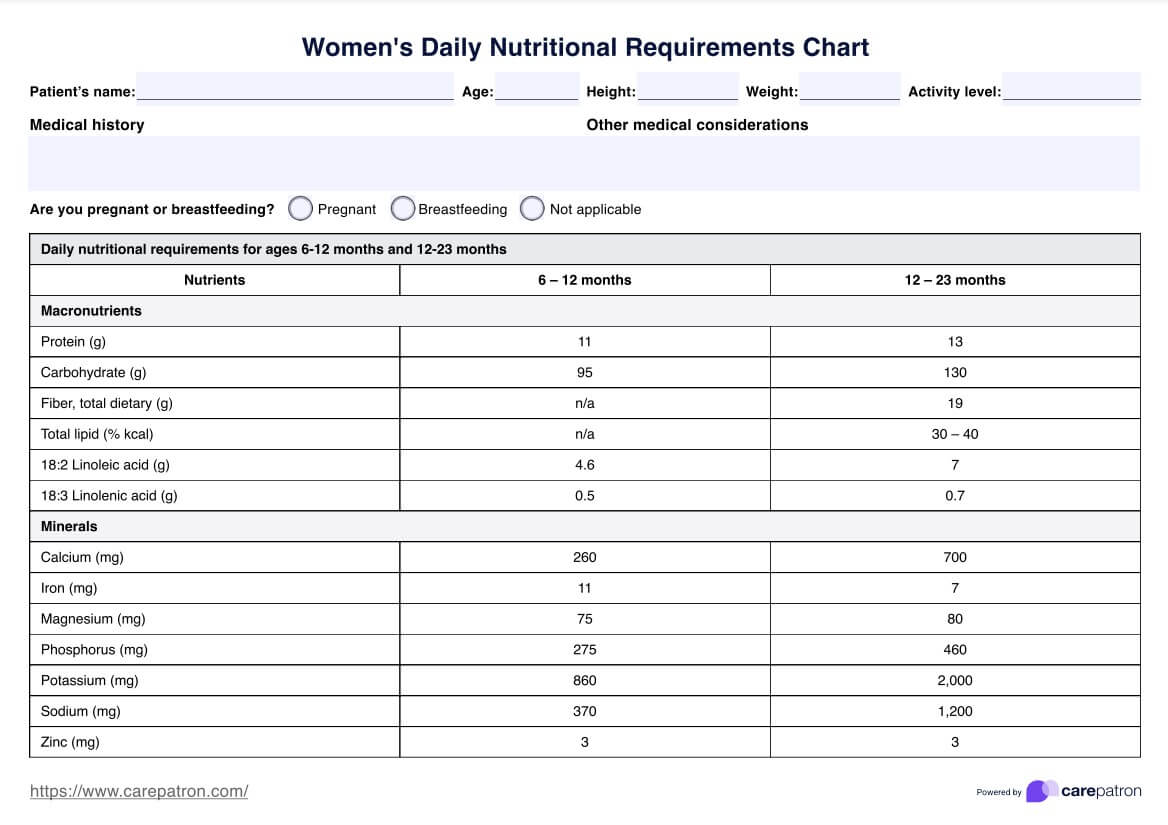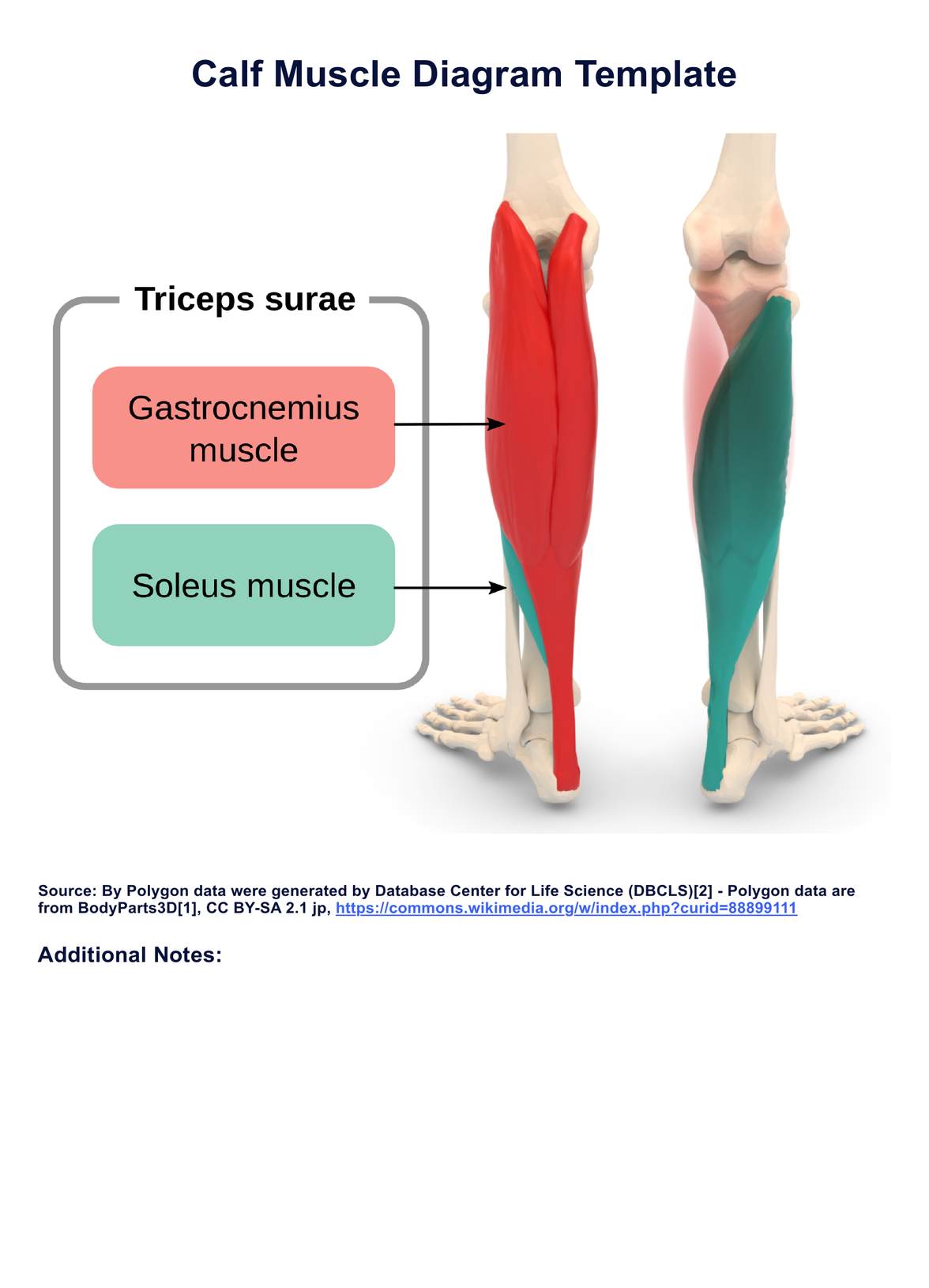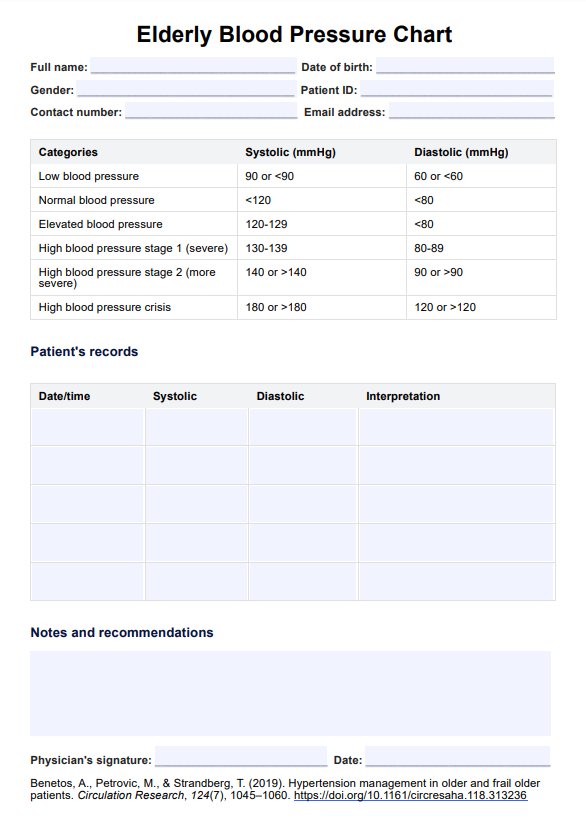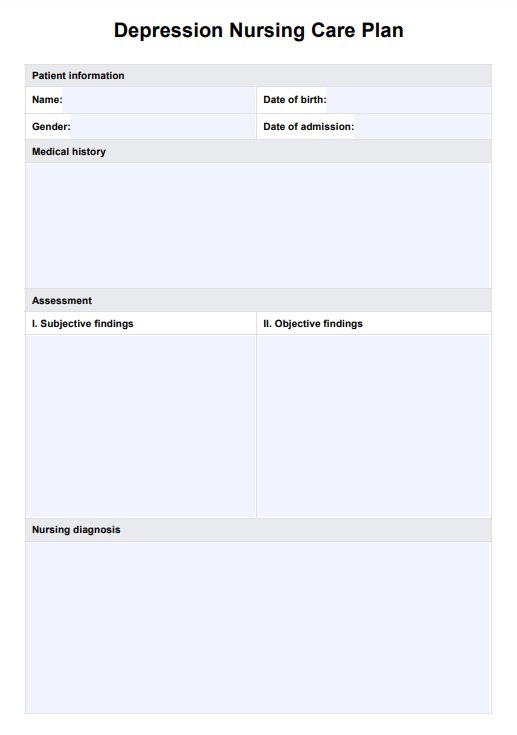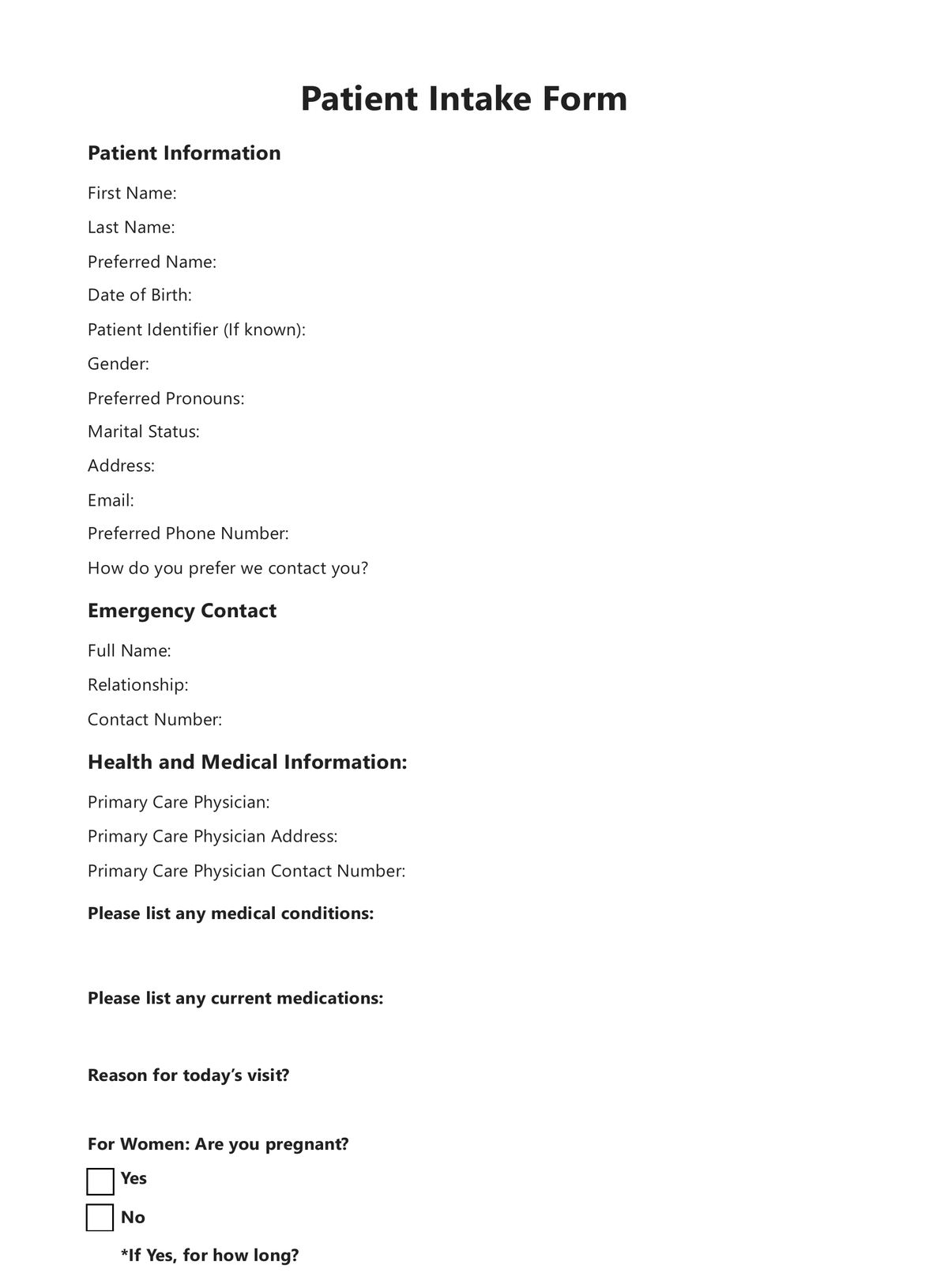Women's Daily Nutritional Requirements Chart
Download Carepatron's free PDF chart outlining women's daily nutritional requirements, including examples of a balanced diet to help you meet your dietary needs effectively.


Understanding nutritional requirements
Nutritional requirements are the specific levels of essential nutrients that our bodies need to function optimally. These include vitamins, minerals, proteins, carbohydrates, dietary fiber, trans fats, and water. Achieving these nutritional requirements is crucial for maintaining overall health and well-being, especially for young women.
A healthy diet, synonymous with healthy eating, prevents various health issues. It not only aids in weight management but also reduces the risk of chronic diseases, including heart disease, diabetes, and certain types of cancers. Striking a balance between different food groups, such as fruits, vegetables, whole grains, lean proteins, and healthy fats, contributes to overall nutritional well-being.
Nutritional requirements vary based on age, gender, physical activity levels, and overall health. Meeting these requirements ensures that the body functions optimally, supporting daily activities and promoting long-term health. If you want to use a general resource that helps monitor your client's nutrition, the nutrition chart is another resource worth having in your toolkit.
Women's Daily Nutritional Requirements Chart Template
Women's Daily Nutritional Requirements Chart Example
How does our Women's Daily Nutritional Requirements Chart work?
Carepatron's Daily Nutritional Requirements Chart is based on the United States Department of Agriculture's Dietary Guidelines for Americans 2020 -2025. This template includes nutritional requirements based on age group, as well as considerations for pregnancy and lactation.
Follow these steps to get started:
Step 1: Download the chart
Click the "Use Template" button to utilize the chart via the Carepatron app. You can also click "Download" to get a PDF copy of this template.
Step 2: Fill in your client's information
Enter the client's information such as name, age, height and weight. Write relevant medical history in the designated field to better understand their nutritional needs.
Step 3: Use the tables as reference
The chart includes various tables based on different age groups and pregnancy/lactation. The tables provide recommended daily intakes of key nutrients. You can also encircle the information in the tables that apply to your client's specific needs.
Step 4: Add notes
Use the "Additional notes" section to include any important information about the client's specific needs and dietary restrictions.
Step 5: Share with your client
Once completed, share the chart with your client to help them better understand their daily nutritional requirements. You can also use this as a reference point for future consultations and meal planning sessions.
When is it best to use this chart?
Here are some instances where using this chart can be beneficial:
Creating a personalized meal plan for your client
When designing a meal plan, it's essential to consider dietary supplements and fortified foods that can help your client meet their nutritional needs. For instance, adult women may benefit from additional folic acid supplements to support reproductive health, while vitamin D is crucial for maintaining strong bones and healthy skin.
By referencing the daily intake recommendations in this chart, you can help your client achieve a well-rounded and balanced meal plan.
Helping clients with specific health conditions
Some individuals may have specific health conditions that require them to follow a strict diet. For example, pregnant women may need to increase their iron intake to prevent anemia, while individuals with diabetes must monitor their carbohydrate consumption carefully. In these cases, referring to the recommended daily intakes in this chart can assist you in creating a tailored meal plan that meets your client's unique nutritional needs.
Educating clients on proper nutrition
By using this chart, you can visually demonstrate the recommended daily intakes of essential vitamins and minerals and explain why meeting these requirements is vital for maintaining good health. This chart can serve as a valuable educational tool for your clients to understand their nutritional needs.
Tracking dietary progress
Finally, this chart can also be used to track any changes or improvements in your client's diet. By regularly referring to the recommended daily intakes, you can monitor if your clients are meeting their nutritional goals and make necessary adjustments to their meal plan if needed.
Why is it crucial for women to meet nutritional needs daily?
Ensuring that women meet their nutritional requirements daily is paramount for promoting overall well-being and safeguarding against potential health issues.
Women's health and hormonal balance
Meeting daily nutritional requirements is vital for supporting young women's health, especially considering the intricate hormonal balance within their bodies. Essential nutrients regulate hormones, menstrual cycles, and reproductive health. A balanced diet supports hormonal balance, potentially easing menstrual discomfort and enhancing reproductive wellness.
Nourishment during pregnancy and lactation
During pregnancy and lactation, women's nutritional needs increase significantly. Proper intake of essential nutrients like folic acid, iron, calcium, and omega-3 fatty acids is necessary for fetal development and supporting the health of both pregnant women and the baby.
Disease prevention and long-term health
A diet rich in essential nutrients with no processed foods is crucial in preventing diseases women tend to be affected by, such as osteoporosis and cardiovascular diseases. Antioxidants and vitamins in healthy foods combat inflammation and strengthen the immune system, reducing the risk of such health issues.
Vitality and energy levels
Consuming nutrient-dense, healthy food fuels women to maintain energy levels, cope with daily stressors, and engage in physical activities. Healthy eating directly influences vitality, mental acuity, and overall stamina, enhancing the quality of life.
Maintaining healthy skin and healthy weight
Consuming nutrient-dense foods with fewer calories can support weight management without sacrificing essential nutrients. Incorporating a balanced diet filled with whole grains, lean proteins, fruits, and vegetables helps in achieving satiety while keeping calorie consumption in check.
Additionally, this approach benefits skin health; vitamins and hydration from fresh produce play a significant role in promoting elasticity and a radiant complexion. By focusing on these nutritional strategies, women can effectively manage their weight and nourish their skin, contributing to overall well-being.
Commonly asked questions
The daily nutritional intake for a woman varies based on factors like age, activity level, and health goals. A balanced diet should generally include a mix of lean proteins, whole grains, fruits, vegetables, and healthy fats to meet essential nutrient needs.
The amount of food a woman should eat daily depends on age, metabolism, and physical activity. Focusing on portion control, listening to hunger cues, and consuming nutrient-dense foods are essential to overall health.
The Recommended Dietary Allowance (RDA) for a 50-year-old woman varies. Still, standard guidelines include about 46 grams of protein, 1,200 to 1,600 calories, and adequate intake of vitamins and minerals to support aging-related nutritional needs.


